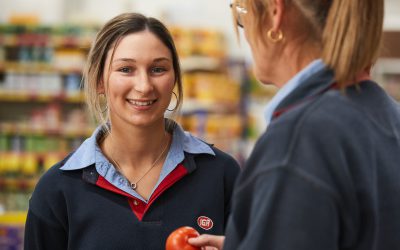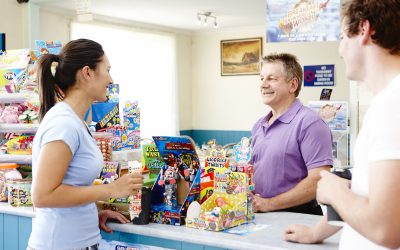GROW WITH GREATER HAMILTON
Greater Hamilton covers a rich landscape of more than 6600 square kilometres across Victoria’s famous Western District. Agriculture accounts for around 80% of land use, with almost half a million hectares of highly fertile land under production.
Once referred to as the “wool capital of the world”, Greater Hamilton has now positioned itself as one of Australia’s most rapidly-expanding grain growing areas. The diversification from livestock to broadacre cropping has triggered one of the most significant landscape changes in history, enhanced by the early adoption of new technology and innovation to improve crop yields and profitability.
More than $215 million worth of prime lambs, beef cattle, cropping, timber, intensive horticulture, viticulture and wool is now traded annually in ever-expanding export and domestic markets, with vertical integration enhancing the paddock-to-plate potential of new and existing producers.

OUR REGION
THE HEARTLAND OF VICTORIA’S WESTERN DISTRICT.
Greater Hamilton is home to 10 thriving townships. The retail and service centre of Hamilton is supported by the surrounding towns of Balmoral, Branxholme, Byaduk, Cavendish, Coleraine, Dunkeld, Glenthompson, Penshurst and Tarrington. The region contains three main land systems; The Dundas Tablelands, The Victorian Volcanic Plains and The Grampians.

LAND USE
ONE PLACE. MANY AGRICULTURAL POSSIBILITIES
The expression ‘riding on the sheep’s back’ was coined for this corner of the nation, with Greater Hamilton historically referred to as the wool capital of the world. Today, it’s the land of plenty, as producers harness the ultimate combination of climate and location.

OPPORTUNITIES
GREATER HAMILTON IS A LAND OF OPPORTUNITY.
Greater Hamilton is well placed to meet growing global demand for farm products and services with a focus on long-term sustainability. Vertical integration is enhancing the paddock-to-plate potential of new and existing producers, while there are growing opportunities for agricultural manufacturing industries with development-ready industrial land connected to 3-phase power, high pressure gas and water.
.

CLIMATE
YOU’RE ENTERING A HIGH RAINFALL ZONE.
Greater Hamilton is among the five per cent of the continent to fall into Australia’s High Rainfall Zone, with an annual average of 680mm. The heaviest rainfall occurs from May to October, with a growing season of 8-9 months. Winter temperatures are relatively cold and often combined with strong winds. Summer is generally mild compared to areas further north in Victoria and NSW.

MARKET ACCESS
CENTRAL LOCATION. GLOBAL REACH.
Greater Hamilton’s established freight routes via road, rail or sea allow for efficient commercial connectivity to export markets, along with Melbourne, Adelaide and large regional centres like Warrnambool and Mount Gambier. The digital economy is also transforming production, supply chain and marketing processes.

CASE STUDIES
GREATER HAMILTON IS A LAND OF OPPORTUNITY.
“There’s really no better place than Greater Hamilton when it comes to innovation, growing of new crops, new commodities and trialling new enterprises.” – Meet Waltanna Farms’ Mike Nagorcka and other innovative Greater Hamilton producers.
ADDING VALUE
GREATER HAMILTON IS IDEALLY PLACED TO MEET GROWING WORLDWIDE DEMAND FOR FARM PRODUCTS AND SERVICES.
The region has embraced nationwide food production targets by increasing diversification and pursuing value-adding opportunities. New research and development is also paving the way for increased production with a smaller environmental footprint and improved quality assurance.
The focus is on long-term sustainability. More intensive use of land with new enterprises like horticulture, viticulture, and plantation timber continues to enhance the region’s economy and improve job prospects.
For new and existing producers, vertical integration is being expanded, with a growing number overseeing the complete paddock-to-plate process.
The potential for new agricultural manufacturing industries is equally as exciting, with the widespread availability of development-ready industrial land linked to 3-phase power, high pressure gas and water supply.
SUBSCRIBE TO ECONOMIC DEVELOPMENT E-NEWSLETTER
CASE STUDY
WALTANNA FARMS, STRATHKELLAR
Waltanna Farms started off as a boutique operation processing and growing flaxseed at Strathkellar just east of Hamilton, but the business has expanded tenfold following the establishment of a co-op of growers across Australia.
“It’s taking a lot to keep up with the company growth; we’re currently planning a third factory that includes an automated bottling machine, in a bid to accommodate the 380+ companies that we now supply,” says director Mike Nagorcka. “We have a total of 41 shelf-ready products, and our main drive and focus at the moment is on third-party processing of predominantly oilseeds both locally and for export.”
Waltanna Farms has also capitalised on the booming market for legally-grown hemp in order to help build the Australian hemp seed research and supply industry. Hemp’s short 90-day growing season has brought new flexibility to the Nagorckas’ cropping regime, and they are now working to develop a hemp grower co-operative modelled on their highly successful flaxseed structure.
Waltanna Farms, Glenelg Highway, PO Box 685 Hamilton, Vic 3300
“There’s really no better place than Greater Hamilton when it comes to innovation, growing of new crops, new commodities and trialling new enterprises. The opportunities here are endless given our climate, and I think it’s underestimated how profitable and how versatile Greater Hamilton can be.”
– MIKE NAGORCKA
WE MAKE DOING BUSINESS WITH US EASY
WE PRIDE OURSELVES ON MAKING BUSINESS EASY FOR OUR LOCAL BUSINESSES.
Permits, approvals, support and advice with council is easy.
Latest news
Free 1:1 Business Support with Colin Thompson
Free Business Mentoring Colin Thompson is our Senior Small Business Support Officer and is...
New Advice in Applying Refusal of Service Obligation to Melbournians
REFUSAL OF SERVICE OBLIGATIONS FOR REGIONAL BUSINESSES The Department of Jobs, Precincts &...
Face Masks Now Mandatory in Regional Victoria
A quick guide on the do’s and don’ts of face masks and wear you can buy them locally



